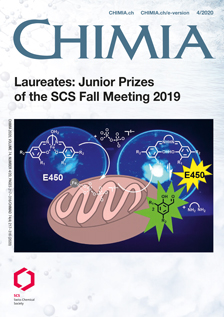Learning (from) the Electron Density: Transferability, Conformational and Chemical Diversity
DOI:
https://doi.org/10.2533/chimia.2020.232PMID:
32331538Keywords:
Computational chemistry, Electron density, Machine learning, Quantum chemistryAbstract
Machine-learning in quantum chemistry is currently booming, with reported applications spanning all molecular properties from simple atomization energies to complex mathematical objects such as the many-body wavefunction. Due to its central role in density functional theory, the electron density is a particularly compelling target for non-linear regression. Nevertheless, the scalability and the transferability of the existing machine-learning models of ρ(r) are limited by its complex rotational symmetries. Recently, in collaboration with Ceriotti and coworkers, we combined an efficient electron density decomposition scheme with a local regression framework based on symmetry-adapted Gaussian process regression able to accurately describe the covariance of the electron density spherical tensor components. The learning exercise is performed on local environments, allowing high transferability and linear-scaling of the prediction with respect to the number of atoms. Here, we review the main characteristics of the model and show its predictive power in a series of applications. The scalability and transferability of the trained model are demonstrated through the prediction of the electron density of Ubiquitin.
Downloads
Published
Issue
Section
License
Copyright (c) 2020 Alberto Fabrizio, Ksenia Briling, Andrea Grisafi, Clémence Corminboeuf

This work is licensed under a Creative Commons Attribution-NonCommercial 4.0 International License.







